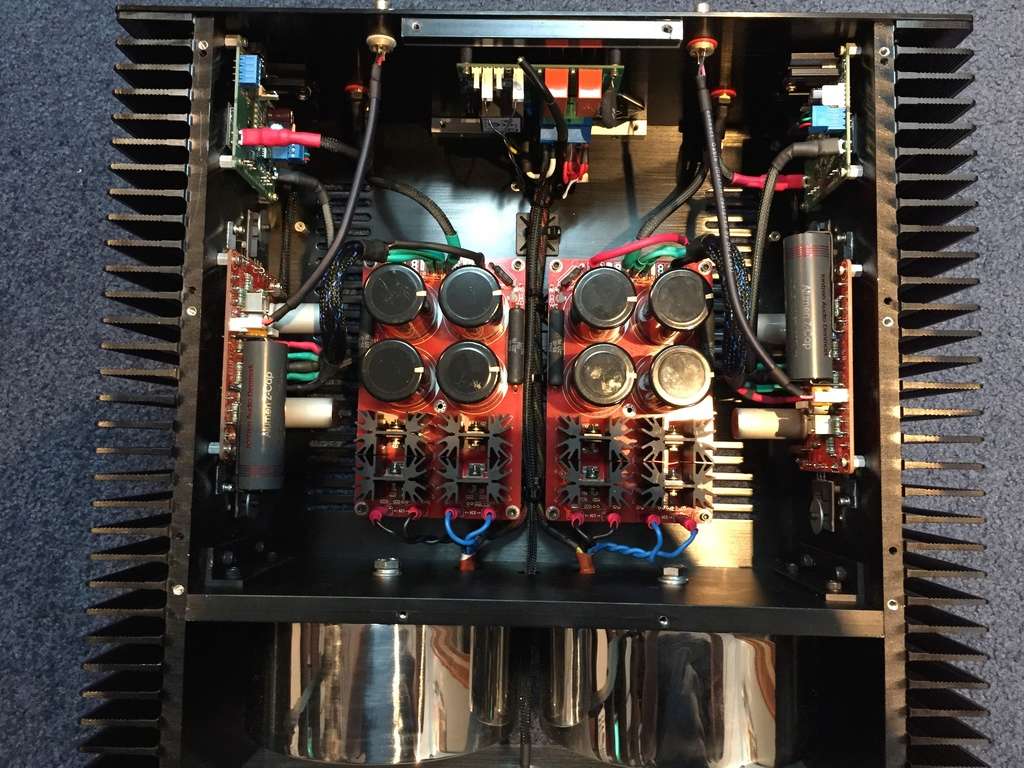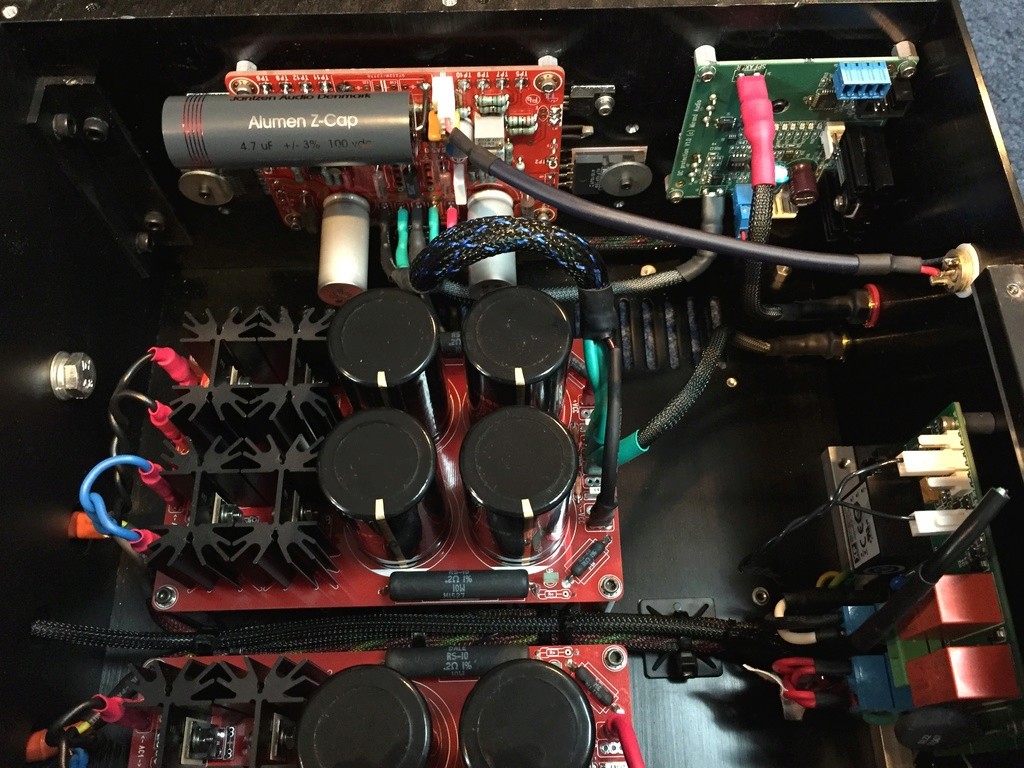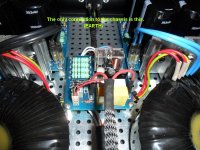Hi Pinocchio,
Thanks for the input. Nice amp you have there - one of the best looking Class A amps I have seen. Too bad my trip to Montreal got cancelled or I would have probably seen this in person.
The trick it seems is to not connect the PSU's together in any way. The 50v is not the worry. It's if there is an insulation failure on primary and it touches secondary - the amp circuits are energized with line 120vac or 220vac in Europe. That's when the GLB or NTC can save your life if you accidentally touch the amp in the wrong place. Albeit, it's a rare and difficult thing to happen.
Let me know if you do make it to Montreal eventually, we can have Scotch and listen to some good music!
For the transformer, as you have said, it is something that would almost never happen since most transformers are isolated up to 4000V if I remember correctly. But you never really know in the end...
Ciao!
Do
using two mono-blocks will remove the link between the channels.I was using it with Antek trafos with separate windings. The issue seems to be trying to use it as two separate PSU's with two trafos (4 separate secondary windings as suggested) - I still get residual hum circa 1.1mV AC at amp outputs. I know this is a grounding issue, but even following carefully grounding schemes for separate monoblocks, the moment the common ground of the Left and Right source channels are connected results in hum. Perhaps it is an inevitable fact that this happens in dual PSU designs and to avoid one need to use one PSU for both amp channels.
Every multi-channel amplifier has the problem as described by D,Joffe.
His solution does not eliminate the interference current. But the attenuation of the interference current by adopting HBRR+HBRL does reduce the noise very significantly.
if there is no Audio Ground to Chassis connection then there must be no exposed conductive parts.I have bought these PSU's in fact to build a dual trafo, dual CRC PSU for the USSA5 as shown in your link - beautiful amp. Please show us explicitly a schematic diagram of the PSU connections and grounding. Scheme of this beautiful amp. Maybe we are still
Kissing something? Maybe we need to use balanced line drivers?


Just looking st he above image I can see that there is a total absence of any ground connection between the GND of both CRC PSU's to each other. It's like the amps are in separate boxes.
I think I can see exposed conductive barrels of the RCA input sockets !
Hello X
I don't know the obligations in the electricity grid for each country, but in France (220V) unless I make a mistake, nothing obliges me to connect as you do and I understand better this CTN story because I really didn't see what it was for.
In fact, a household electrical installation must have a properly calibrated grounding (metal pole, wire surrounding the house, etc.) and this grounding goes directly to the electrical distribution panel on a differential circuit-breaker that will be connected to all the grounding points of the house (much like a star wiring), of course there are several calibrations depending on the type of use. So a problem had to occur, it is the earth leakage circuit breaker of the house that would protect me, it says it must be installed in the rules.
So to answer your previous question, the only point on the chassis of my connected amplifier is the grounding(earth), which also plays a kind of' Faraday cage'.
I hope that's pretty clear and that the online translator won't change my comment too much.

I don't know the obligations in the electricity grid for each country, but in France (220V) unless I make a mistake, nothing obliges me to connect as you do and I understand better this CTN story because I really didn't see what it was for.
In fact, a household electrical installation must have a properly calibrated grounding (metal pole, wire surrounding the house, etc.) and this grounding goes directly to the electrical distribution panel on a differential circuit-breaker that will be connected to all the grounding points of the house (much like a star wiring), of course there are several calibrations depending on the type of use. So a problem had to occur, it is the earth leakage circuit breaker of the house that would protect me, it says it must be installed in the rules.
So to answer your previous question, the only point on the chassis of my connected amplifier is the grounding(earth), which also plays a kind of' Faraday cage'.
I hope that's pretty clear and that the online translator won't change my comment too much.
Last edited:
So the amplifier can be used with out chassis ground?
In my case am using two transformers and two psu, if i connect to home ground there is audible hum.
Once i tried by removing all the ground that is from chassis and home ground- then it was silent
My psu DC output ratings varies from 45v to 50v and my transformer ratings are dual 0-35v with 8A
In my case am using two transformers and two psu, if i connect to home ground there is audible hum.
Once i tried by removing all the ground that is from chassis and home ground- then it was silent
My psu DC output ratings varies from 45v to 50v and my transformer ratings are dual 0-35v with 8A
I don't know if what I'm doing is the reference in connection but I always proceed in this way and all my achievements (amplifier or preamplifiers are totally silent)
- All connectors (IN & OUT) are isolated from the amplifier chassis.
- The center point of the mass (the GND star) is isolated from the chassis.
- The only connection to the chassis is the earth connection.
In HF (ham radio) if these conditions are not met you are sure to have noises (50Hz or 60Hz in general).
- All connectors (IN & OUT) are isolated from the amplifier chassis.
- The center point of the mass (the GND star) is isolated from the chassis.
- The only connection to the chassis is the earth connection.
In HF (ham radio) if these conditions are not met you are sure to have noises (50Hz or 60Hz in general).
NO, this connection is the protection in case of problem and should always be present.So the amplifier can be used with out chassis ground?
NO, this connection is the protection in case of problem and should always be present.
You mean to use chassis ground to home ground?
The power or supply voltage of an amplifier is irrelevant and a 15V powered amplifier will be wired as a 50V power supply.
The major problem I think is that a lot of people confuse or associate grounding (earth) and masses (GNDs) and it has to be said that they are very different things and should never be connected together.
Then the GND must be carefully wired.
That's my point of view.
The major problem I think is that a lot of people confuse or associate grounding (earth) and masses (GNDs) and it has to be said that they are very different things and should never be connected together.
Then the GND must be carefully wired.
That's my point of view.
YES.You mean to use chassis ground to home ground?
The yellow and green wires are also connected to the earth connection if they exist on a transformer.
Attachments
If you connect the ground (GND) of an amplifier to the chassis with the ground (earth) you are exposed to all the noise nuisances transmitted by the mains and there are many.
Yes, that's why there are filters for the earth ground, DC blockers, etc. but commercial amps have to do this via GLB or NTC as it is required by electrical code for safety. Note that forum rules prohibit the recommendation by members to set up a system that doesn't follow electrical code for safety when it comes to wiring up mains.
Look at the Pass F6 PSU above, it follows code and connects earth GND to chassis GND and to PSU power GND via an NTC. That follows electrical code and has no hum. Can a similar arrangement be made for the dual CRC and dual Trafo? I haven't been able to find it yet.
could you kindly confirm if you have received the PCB's.?
I received mine!
- Home
- Group Buys
- CRC Power Supply (Class A amplifier)
 Guys - just a reminder not to abuse the Quote function, per Note 3 of the Forum Rules:
Guys - just a reminder not to abuse the Quote function, per Note 3 of the Forum Rules: